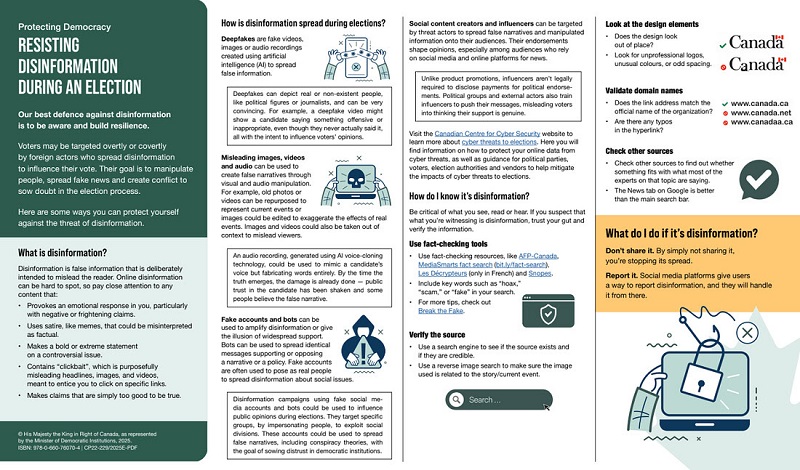Alberta
Business, not as usual

Business, not as usual. Employer support of reservists in time of pandemic.
Submitted by: Canadian Forces Liaison Council/Alberta Chapter
In this challenging time of pandemic, it’s probably safe to say that business will not carry on as usual. Employers have much to be concerned about – employees’ health and welfare, revenue, and simply put – survival.
In many cases employers have reservist-employees who balance double duty with both the Reserve Force and their workplace. Reservists are prepared willing and able to answer the call to support pandemic response or other emergencies, either nationally or locally.
Preparations for pandemic support across Canada are underway, and this includes many reservists, army, navy, air force alike, who have been asked to mobilize. It is with thanks to many employers who support their reservist-employee as they volunteer for Operation LASER 20-01 – the Canadian Armed Forces’ response to the COVID-19 pandemic within Canada.
The Government of Canada has authorized reservists, who volunteer, to be placed on full-time Class C service to support the Operation. The Canadian Armed Forces is currently mobilizing 24,000 service members, both regular and reserve, to support provincial and municipal governments and agencies in their efforts to suppress the disease, to support vulnerable populations, and to provide logistical and general support to communities. In Alberta, there will be hundreds of reservists who will choose to deploy and serve to support our communities.
The impact of the COVID-19 pandemic on Canadians has been unprecedented, as is the scale of the Canadian Armed Forces mobilization under the Operation LASER response. Reservists’ dedication to duty in volunteering for Operation LASER is essential to support both provincial and municipal authorities during this crisis. Canada cannot meet its defence needs at home and abroad without the dedicated, motivated and highly skilled people who work tirelessly to defend Canada and promote Canadian values and interests. Op LASER is the immediate need, but reservists have been and will continue to be needed to support other domestic crisis, such as floods and fires, which are occurring on a more frequent basis.
In Alberta, Employment Standards Code, outlines a reservist-employee who has completed at least 26 consecutive weeks of employment with an employer is entitled to reservist leave without pay to take part in deployment to a Canadian Forces operation inside Canada. It also outlines that all leave provided to Reservists is leave without pay – as the Canadian Armed Forces will provide the Reservist with income for the duration of their contract. It’s good business sense to keep good employees and the employment code notes that employers cannot terminate, or lay off, an employee who has started reservist leave. Although these are the legislated minimums, organizations are encouraged to develop and implement military leave policies that support a reservist-employee even further.
There is great pride for reservists as they deploy domestically and equally for the employers who support them. Undoubtedly, business will not be as usual and if you have a reservist-employee there is support available for your organization. Employer support during this time of crisis is greatly appreciated by the Canadian Armed Forces and the Government of Canada. Indeed, when you employ a reservist, you in turn, are serving your country.
How can I find out more information for my business?
• Federal Compensation for Employers of Reservists Program (CERP) – Employers can apply and eligible applicants will receive a lump sum payment, in the form of a grant, following the deployment period of the reservist employee.
- Military Leave Policy information – if your organization does not already have a formal military leave policy, this may be a good opportunity to implement one that provides additional detail beyond what is in the job protection legislation.
- Canadian Forces Liaison Council – Employers Supporting Reservists
Info for military leave policies and federal support (CERP): https://www.canada.ca/en/department-national-defence/services/benefits-military/supporting-reservists-employers.html
- With Glowing Hearts – Reservist Support Program – a turnkey employer support program for reservists. The program provides information and tools for employers of reservists and is an asset for a business to attract and retain experienced and valued reservist/employees.
Info and/or to Register: https://www.surveymonkey.com/r/WithGlowingHearts
originally published April 9, 2020.
Alberta
CPP another example of Albertans’ outsized contribution to Canada

From the Fraser Institute
By Tegan Hill
Amid the economic uncertainty fuelled by Trump’s trade war, its perhaps more important than ever to understand Alberta’s crucial role in the federation and its outsized contribution to programs such as the Canada Pension Plan (CPP).
From 1981 to 2022, Albertan’s net contribution to the CPP—meaning the amount Albertans paid into the program over and above what retirees in Alberta received in CPP payments—was $53.6 billion. In 2022 (the latest year of available data), Albertans’ net contribution to the CPP was $3.0 billion.
During that same period (1981 to 2022), British Columbia was the only other province where residents paid more into the CPP than retirees received in benefits—and Alberta’s contribution was six times greater than B.C.’s contribution. Put differently, residents in seven out of the nine provinces that participate in the CPP (Quebec has its own plan) receive more back in benefits than they contribute to the program.
Albertans pay an outsized contribution to federal and national programs, including the CPP because of the province’s relatively high rates of employment, higher average incomes and younger population (i.e. more workers pay into the CPP and less retirees take from it).
Put simply, Albertan workers have been helping fund the retirement of Canadians from coast to coast for decades, and without Alberta, the CPP would look much different.
How different?
If Alberta withdrew from the CPP and established its own standalone provincial pension plan, Alberta workers would receive the same retirement benefits but at a lower cost (i.e. lower CPP contribution rate deducted from our paycheques) than other Canadians, while the contribution rate—essentially the CPP tax rate—to fund the program would likely need to increase for the rest of the country to maintain the same benefits.
And given current demographic projections, immigration patterns and Alberta’s long history of leading the provinces in economic growth, Albertan workers will likely continue to pay more into the CPP than Albertan retirees get back from it.
Therefore, considering Alberta’s crucial role in national programs, the next federal government—whoever that may be—should undo and prevent policies that negatively impact the province and Albertans ability to contribute to Canada. Think of Bill C-69 (which imposes complex, uncertain and onerous review requirements on major energy projects), Bill C-48 (which bans large oil tankers off B.C.’s northern coast and limits access to Asian markets), an arbitrary cap on oil and gas emissions, numerous other “net-zero” targets, and so on.
Canada faces serious economic challenges, including a trade war with the United States. In times like this, it’s important to remember Alberta’s crucial role in the federation and the outsized contributions of Alberta workers to the wellbeing of Canadians across the country.
Alberta
Made in Alberta! Province makes it easier to support local products with Buy Local program

Show your Alberta side. Buy Local. |
When the going gets tough, Albertans stick together. That’s why Alberta’s government is launching a new campaign to benefit hard-working Albertans.
Global uncertainty is threatening the livelihoods of hard-working Alberta farmers, ranchers, processors and their families. The ‘Buy Local’ campaign, recently launched by Alberta’s government, encourages consumers to eat, drink and buy local to show our unified support for the province’s agriculture and food industry.
The government’s ‘Buy Local’ campaign encourages consumers to buy products from Alberta’s hard-working farmers, ranchers and food processors that produce safe, nutritious food for Albertans, Canadians and the world.
“It’s time to let these hard-working Albertans know we have their back. Now, more than ever, we need to shop local and buy made-in-Alberta products. The next time you are grocery shopping or go out for dinner or a drink with your friends or family, support local to demonstrate your Alberta pride. We are pleased tariffs don’t impact the ag industry right now and will keep advocating for our ag industry.”
Alberta’s government supports consumer choice. We are providing tools to help folks easily identify Alberta- and Canadian-made foods and products. Choosing local products keeps Albertans’ hard-earned dollars in our province. Whether it is farm-fresh vegetables, potatoes, honey, craft beer, frozen food or our world-renowned beef, Alberta has an abundance of fresh foods produced right on our doorstep.
Quick facts
- This summer, Albertans can support local at more than 150 farmers’ markets across the province and meet the folks who make, bake and grow our food.
- In March 2023, the Alberta government launched the ‘Made in Alberta’ voluntary food and beverage labelling program to support local agriculture and food sectors.
- Through direct connections with processors, the program has created the momentum to continue expanding consumer awareness about the ‘Made in Alberta’ label to help shoppers quickly identify foods and beverages produced in our province.
- Made in Alberta product catalogue website
Related information
-

 Energy2 days ago
Energy2 days ago‘War On Coal Is Finally Over’: Energy Experts Say Trump Admin’s Deregulation Agenda Could Fuel Coal’s ‘Revival’
-

 COVID-192 days ago
COVID-192 days agoThe Pandemic Justice Phase Begins as Criminal Investigations Commence
-

 Economy1 day ago
Economy1 day agoThe Net-Zero Dream Is Unravelling And The Consequences Are Global
-

 2025 Federal Election2 days ago
2025 Federal Election2 days agoBefore the Vote: Ask Who’s Defending Our Health
-

 2025 Federal Election1 day ago
2025 Federal Election1 day agoHomebuilding in Canada stalls despite population explosion
-

 2025 Federal Election2 days ago
2025 Federal Election2 days agoThe “Hardhat Vote” Has Embraced Pierre Poilievre
-

 2025 Federal Election14 hours ago
2025 Federal Election14 hours agoCarney’s Fiscal Fantasy: When the Economist Becomes More Dangerous Than the Drama Teacher
-

 Addictions1 day ago
Addictions1 day agoAddiction experts demand witnessed dosing guidelines after pharmacy scam exposed






